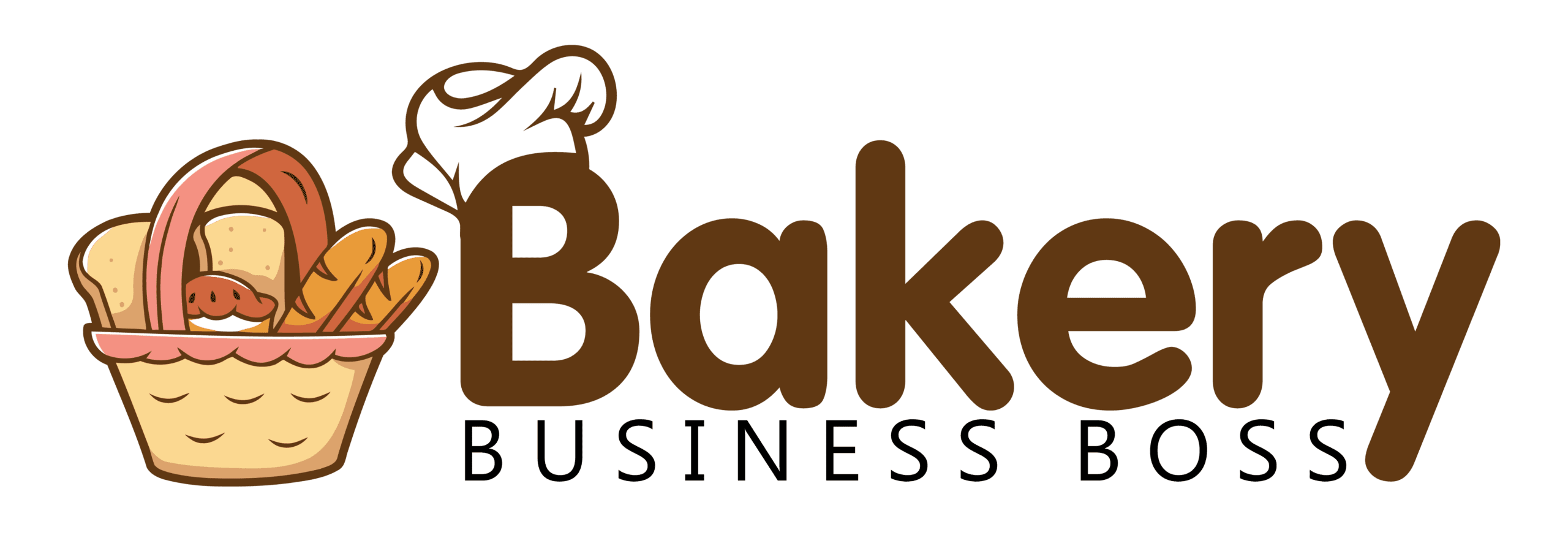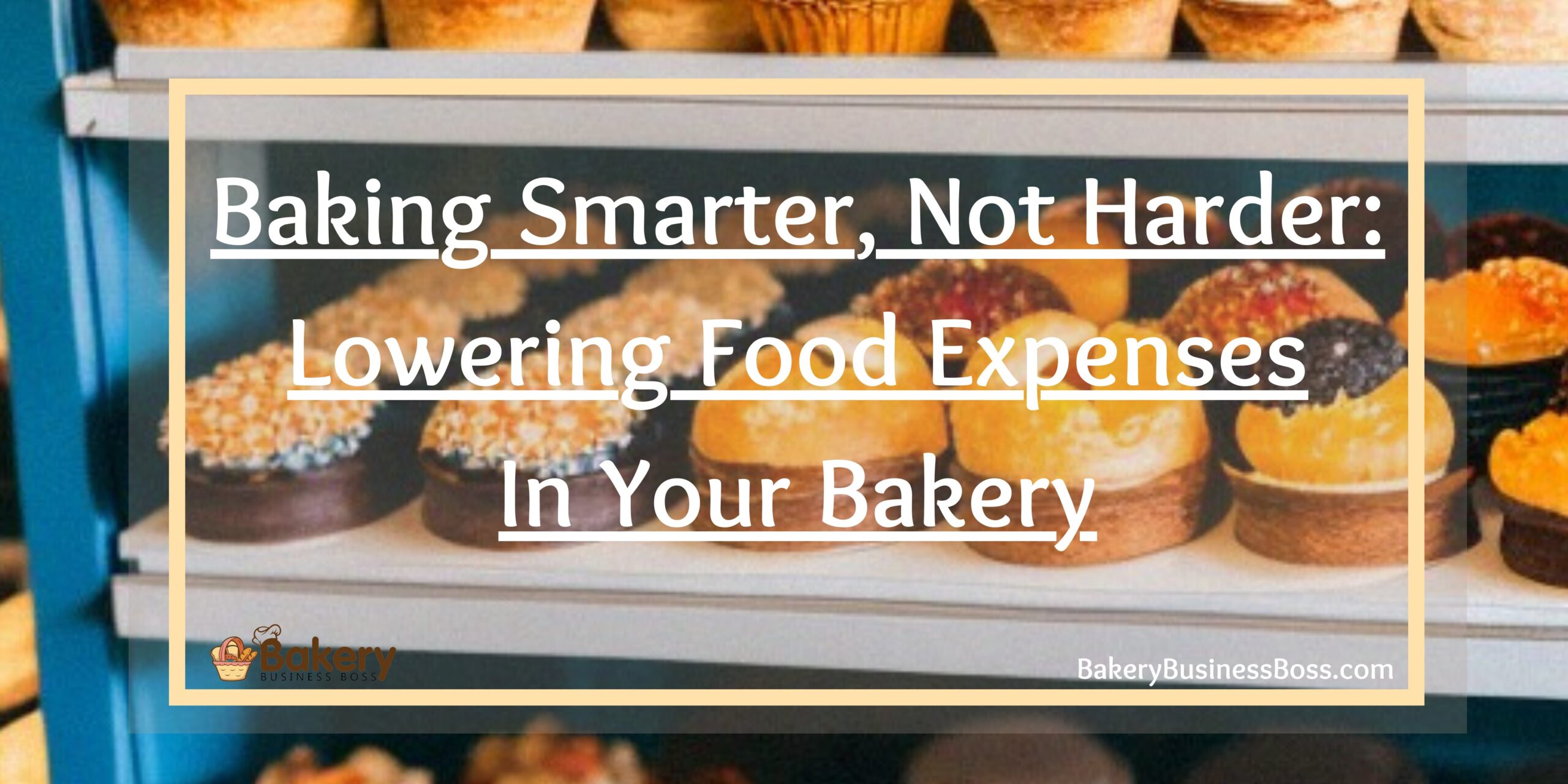Managing a bakery efficiently requires striking a delicate equilibrium between creating delectable treats and controlling expenses. One of the greatest obstacles bakery owners confront is reducing food costs without sacrificing quality.
To effectively lower food costs in your bakery, you should start with optimizing ingredient purchasing, minimizing waste, improving production processes, evaluating suppliers for better pricing, and regularly adjusting menu prices.
In this article, we will examine strategies that enable bakery owners to reduce costs without sacrificing the quality of their baked products. Bakeries can realize substantial cost reductions and increase their profitability.
Smart Ingredient Purchasing

A crucial aspect of reducing food costs in a bakery begins with intelligent ingredient purchasing. Consider these tactics to optimize your purchasing process:
Purchasing in Bulk
Buying ingredients in large quantities from trustworthy wholesalers can dramatically lower expenses per unit, enabling you to save money in the long run. Purchasing in bulk can save money on food at a bakery. When buying materials in larger quantities, you may frequently bargain with wholesalers for lower pricing. Because of economies of scale, buying in bulk lowers the cost per unit.
By decreasing the frequency of orders, this strategy not only saves money but also helps inventory management run more smoothly. You can concentrate on other areas of your bakery operations because it cuts down on the time and effort required for procurement. Purchasing in bulk also guarantees a steady supply of materials, lowering the chance of running out during busy times. To guarantee the quality and dependability of the ingredients you buy, it’s critical to build partnerships with reliable wholesalers.
Seasonal and Local Ingredients
Use seasonal and regionally obtained ingredients whenever possible because they are frequently more economical, offer freshness, and have distinctive flavors. For better prices, develop relationships with nearby farmers and suppliers.
Incorporating seasonal and nearby foods into your bakery has various advantages for reducing food prices in addition to helping the local economy. During their busiest times, seasonal ingredients are in great abundance, which lowers prices because there are more of them available. They provide quality, vibrancy, and freshness that can improve the flavor and appeal of your baked goods. By reducing carbon emissions, local sourcing promotes sustainable practices and lowers transportation costs.
Connecting with nearby farmers and suppliers enables you to bargain for lower prices, ensure a steady supply, and possibly score unique offers. Explore seasonal and local ingredient possibilities by going to farmers’ markets, signing up for CSA programs, and networking with nearby growers. Utilizing regional and seasonal components can enable you to develop distinctive, affordable offerings that appeal to your target market and help local companies.
Competitive Supplier Bids
Request bids from many vendors and regularly compare them to find the best prices and ingredients. To obtain the most advantageous offers, compare them and engage in negotiation.
A bakery must routinely assess its suppliers and look for competitive bids to reduce food costs. Ask for prices and product details from several suppliers so you may compare their offerings. You can evaluate not only the price but also the quality and availability of necessary ingredients by requesting quotations from several providers. Consider aspects including pricing, delivery dates, minimum order quantities, and any other benefits they offer as you carefully analyze each bid.
Once you have collected the quotes, bargain with the providers to get the best terms. To obtain better pricing and incentives, emphasize your dedication to a long-term collaboration and your readiness to make a consistent commercial commitment. Consistent ingredient quality is essential for upholding the standards and flavor of your bakery items, so keep quality and cost in mind while making decisions.
Waste Minimization

Minimizing waste is crucial for lowering food costs in a bakery. Adopt these strategies to reduce waste and maximize ingredient usage:
Portion Control
The first step in reducing ingredient waste and guaranteeing uniformity in product proportions is to train your personnel to adhere to precise portioning requirements. You can maintain portion sizes within desirable ranges and avoid wasting ingredients by employing portion control strategies. By precisely forecasting the consumption of ingredients and lowering the likelihood of overconsumption, this approach also aids in cost control.
Provide your personnel with clear portion size rules, instructions on accurate measuring techniques, and ongoing monitoring and reinforcement of these practices. In addition to lowering ingredient costs, consistent portion control guarantees that your bakery items keep a uniform look and flavor, increasing consumer happiness and confirming your brand’s quality standards.
Inventory Management
To precisely track ingredient quantities and reduce your bakery’s food expenses, a strong inventory management system must be put in place. Identifying surplus or slowly moving ingredients promptly enables you to make modifications and save waste. This is possible with proper inventory management. Create a digital or manual inventory monitoring system that keeps track of the number of ingredients, the date of purchase, and the expiration date.
Maintain regular inventory and sales data reconciliation to spot any discrepancies or potential problems. With this proactive strategy, you may order ingredients more efficiently, stop overstocking, and prevent waste from spoiled or expired products. Making educated decisions regarding purchasing, production, and menu planning, assuring optimal usage of ingredients while eliminating unnecessary costs, is possible when you have a well-organized and effective inventory management system in place.
Repurposing and Recycling
Finding innovative uses for leftover ingredients or day-old baked goods can greatly help save waste and increase the value of your bakery’s products. Investigate creative methods to repurpose discarded or marginally stale items into new menu items rather than throwing them out. Stale bread, for instance, can be made into delectable croutons, breadcrumbs, or bread pudding. Overripe fruits can be added as toppings, fillings, or jams. Cake pops and layers for trifle desserts can be made using leftover cake or pastry.
You may reduce waste while increasing diversity and distinctive flavors in your menu by finding new uses for these ingredients. Establish precise rules for detecting and reusing surplus components, foster employee innovation, and inform customers about your sustainability initiatives. Repurposing and recycling food not only lowers food prices but also demonstrates your dedication to minimizing environmental effects, which appeals to socially conscious consumers.
Check out this article to know the factors that affect bakery franchise costs.
Production Process Optimization

Streamlining your production processes can lead to substantial cost savings. Consider the following techniques:
Efficient Workflow Design
Improving productivity and cutting expenses need a thorough examination of your bakery’s layout and process. Examine the activity flow in your bakery to spot any extra stages or bottlenecks that can reduce productivity. To build a more efficient and ergonomic arrangement, think about moving workstations, tools, and storage spaces. As a result, there will be less staff mobility and time wastage. Optimize job sequencing as well to guarantee a seamless process and reduce disruptions. You may increase output, lower labor expenses, and improve overall operational effectiveness in your bakery by optimizing your process design.
Effective use of the equipment
Maintaining and calibrating your bakery’s equipment regularly is essential for guaranteeing peak performance and reducing energy waste. Create a timetable for regular maintenance on the equipment, such as cleaning, lubrication, and inspections. This will assist in locating any problems and resolving them before they worsen, avoiding pricey breakdowns and lowering energy usage.
Consider purchasing energy-saving devices and appliances as well. When buying new equipment, look for energy-saving certifications and features, as these can drastically lower utility costs over time. To increase efficiency and extend equipment lifespan, teach your personnel the right ways to use and maintain the equipment. You may reduce energy expenses, increase equipment longevity, and boost overall cost-effectiveness in your bakery by properly maintaining and using your equipment.
Batch Production
Using batch production techniques strategically can help your bakery use its ovens more effectively, use less energy, and produce more effectively. You may maximize the capacity of your ovens and cut down on idle time by assembling similar products or things with comparable baking times. This guarantees that you utilize your baking equipment as effectively as possible, eliminating energy waste and lowering operating expenses.
In addition to speeding the manufacturing process and minimizing the time needed for setup and cleanup between various items, batch production enables improved planning and organization. Establish definite rules for arranging production schedules and train your personnel in batch production methods. You may boost productivity, enhance energy efficiency, and ultimately cut your bakery’s manufacturing costs by utilizing batch production.
Supplier Evaluation and Negotiation

Evaluating your suppliers and negotiating favorable terms can significantly impact your bakery’s bottom line. Use these strategies to get the most value from your suppliers:
Regular Supplier Reviews
It’s crucial to periodically evaluate your suppliers if you want to keep your bakery’s costs low. Compare their pricing competitiveness, delivery dependability, and product quality to determine how well they are performing. Keep up with market developments and fresh vendors who might present better choices.
You may make informed decisions about whether to continue with your current supplier connections or look into finding new ones by routinely evaluating your suppliers to make sure you are getting the most value for your money. Maintain open lines of communication with your suppliers, offer comments on how they’re doing, and respond quickly to any issues. You can improve product quality, maintain a competitive edge, and optimize your bakery’s cost structure with regular supplier reviews.
Bargaining for Bulk Discounts
Owning a bakery allows you to save money by buying ingredients in large quantities. Utilize your purchasing power to persuade your suppliers to provide you with bulk discounts. Emphasize your dedication to enduring relationships and your capacity for reliable business. You may cut your food expenses by negotiating bulk discounts that can save you a lot of money.
To establish a baseline for reasonable pricing, examine market prices and competitor offerings before the discussion. Build a solid relationship with your suppliers that is founded on openness and trust. To reward your loyalty with better pricing terms, think about creating volume-based agreements. Your bakery’s profitability can be increased, and your relationships with suppliers can be strengthened, by skillfully negotiating for bulk discounts.
Payment Terms
Flexible payment terms can help your bakery’s cash flow and possibly lead to better pricing arrangements. Negotiating flexible payment terms with your suppliers will help. Considering options for longer payment terms, such as net-30 or net-60, will help you better manage your working capital. Flexible payment terms make it possible for you to better manage your cash flow and make sure you have enough money on hand to cover other operational costs.
If suppliers believe your bakery poses a smaller credit risk, they might be willing to offer more affordable prices. To improve your negotiating position, prove to the other party that you are dedicated to upholding payment terms and maintaining a solid credit history. Review your payment terms frequently, and weigh the advantages of renegotiating with your suppliers. You may increase the cash flow of your bakery operations, bargain for better rates, and cut costs by carefully choosing your payment terms.
Check out this article to learn what are the essential equipment in starting a bakery shop.
Menu Pricing Adjustments

Regularly reviewing and adjusting menu prices is essential to align costs with profitability. Here are some tips for effective menu pricing:
Cost Analysis
A thorough cost analysis of each menu item must be done to reduce food expenses in your bakery. Describe the cost of the materials, taking into account pricing changes, labor costs, overhead expenditures, and the targeted profit margins. This study enables you to pinpoint products that may require revisions if their ingredient costs are high or their profit margins are low.
Take into account cheaper alternative ingredient possibilities that offer comparable quality. Look for opportunities to buy in bulk or bargain for better terms with suppliers. To find opportunities for improvement, assess the effectiveness and productivity of the workforce. A thorough cost analysis gives you important insights into the profitability of your menu items, allowing you to cut food costs while preserving profitability by choosing wisely on pricing, ingredient sourcing, and manufacturing methods.
Conduct competitive research
To make sure your rates stay competitive and accurately reflect the value you provide, keep up with the pricing strategies of other bakeries in your neighborhood. Investigate and contrast the costs of comparable goods while taking into account aspects like quality, serving sizes, and distinctive selling qualities. To stay one step ahead of the competition, keep an eye on any pricing trends or market developments.
While it’s crucial to maintain competition, you should also take into account your bakery’s distinctive features, such as its use of specialty products or artisanal techniques, which can allow you to charge a little bit more. Strive to find a balance between your consumers’ value and competitive pricing. Keep an eye on the market and your bakery’s financial objectives while reviewing and adjusting your rates. You can position your bakery effectively in the market, preserve profitability, and control food prices by conducting competitive research.
Strategic Upselling
Applying strategic upselling strategies will help your bakery become more gainful and cut down on food expenses. To upsell customers on premium or high-margin items, teach your team how to draw attention to them. Make eye-catching displays or signage to advertise these products. Your staff should receive training on how to make suggestions for extras or enhancements that will improve the general client experience and raise the average transaction value.
You may optimize income without significantly increasing expenditures by persuading clients to choose extra items. For instance, if a customer gets a slice of cake, advise they also have a specialty coffee or a scoop of ice cream to go with it. Strategic upselling can offset any higher ingredient prices while also boosting sales and profit margins. But watch out for genuine upselling that doesn’t ruin the clientele’s experience. To continuously improve and boost profitability, put training programs into place, lay out clear criteria, and keep an eye on how well your upselling methods are working.
Frequently Asked Questions
How many purchasing ingredients in bulk reduce a bakery’s food costs?
By taking advantage of economies of scale, bakery companies can lower the cost per item by purchasing ingredients in bulk. Over time, this strategy frequently yields considerable cost reductions. Purchasing in bulk also reduces the frequency of orders, streamlines inventory management, and lowers shipping expenses.
What are some practical strategies for cutting down on waste in a bakery and lowering food costs?
There are a few tactics you may use to reduce waste in a bakery and reduce food costs:
- Use portion control strategies to ensure uniform and suitable serving sizes and cut down on ingredient waste.
- Put in place a reliable inventory management system to correctly track ingredient quantities and avoid expiration.
- To reduce waste and improve menu options, repurpose leftover ingredients or day-old baked items.
- Regularly evaluate and improve manufacturing processes to cut down on errors, boost productivity, and eliminate waste.
How frequently should bakery proprietors review and modify menu prices?
Bakery business owners should regularly review and modify their menu prices. Market circumstances, competition, labor costs, ingredient costs, and labor costs should all be frequently tracked and examined. It is advised to carry out thorough cost analyses regularly to make sure menu prices are in line with desired levels of profitability. Additionally, keeping up with consumer tastes and market trends will assist evaluate whether any price changes are required to preserve profitability while remaining competitive.
To learn more on how to start your own bakery business check out my startup documents here
Please note that the contents of this blog are for informational and entertainment purposes only and should not be construed as legal advice. Any action taken based on the information provided in this blog is solely at your own risk. Additionally, all images used in this blog are generated under the CC0 license of Creative Commons, which means they are free to use for any purpose without attribution.

About the author. Entrepreneur and Bakery Business Fan.
Hi! I am Shawn and I am a happy individual who happens to be an entrepreneur. I have owned several types of businesses in my life from a coffee shop to an import and export business to an online review business plus a few more and now I create online bakery business resources for those interested in starting new ventures. It’s demanding work but I love it. I do it for those passionate about their business and their goals. That’s why when I meet a bakery business owner, I see myself. I know how hard the struggle is to retain customers, find good employees and keep the business growing all while trying to stay competitive.
That’s why I created Bakery Business Boss: I want to help bakery business owners like you build a thriving business that brings you endless joy and supports your ideal lifestyle.

